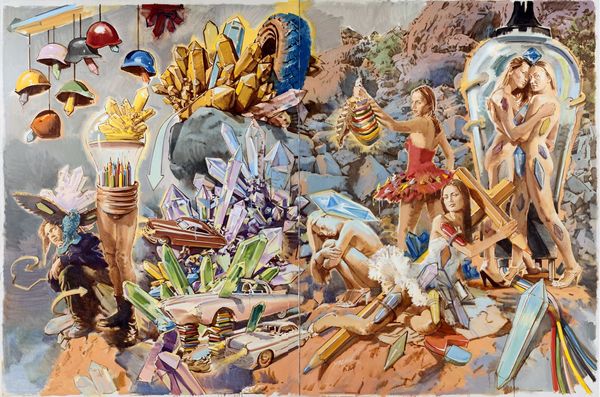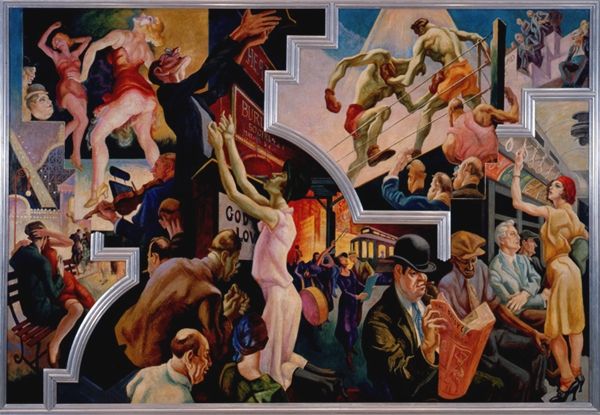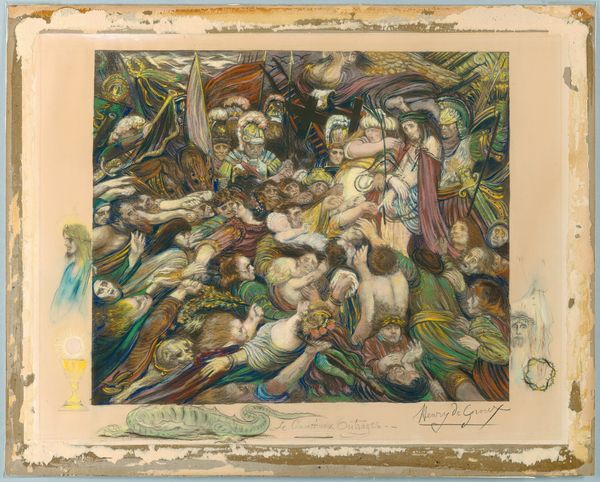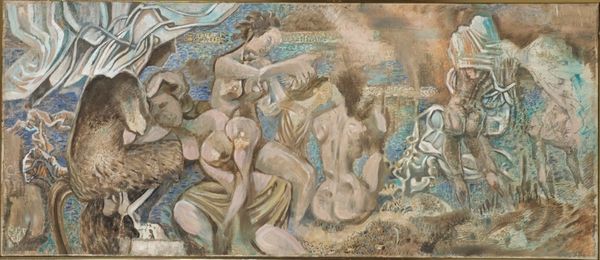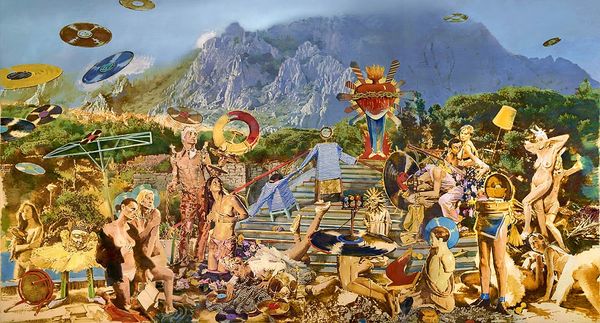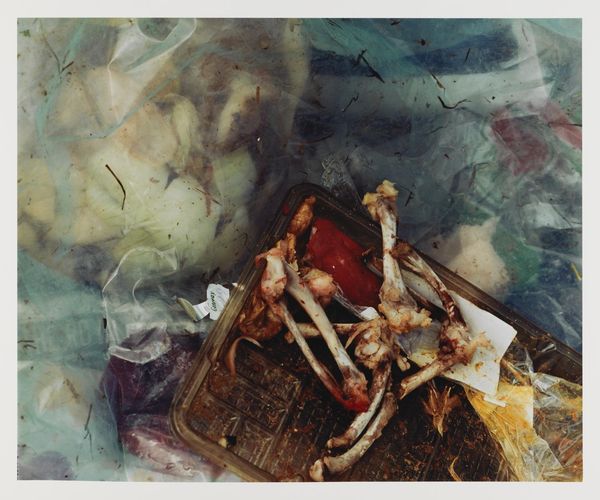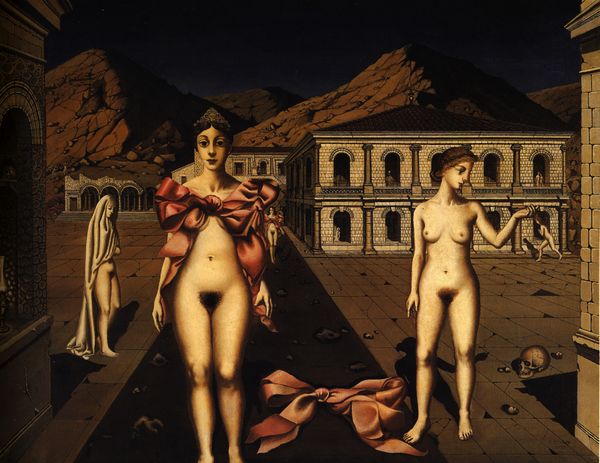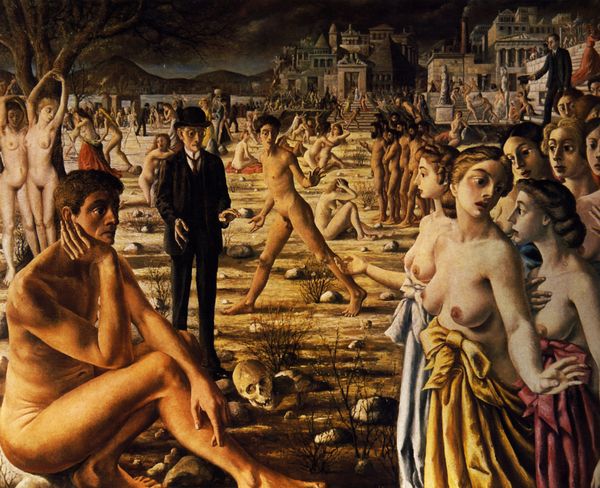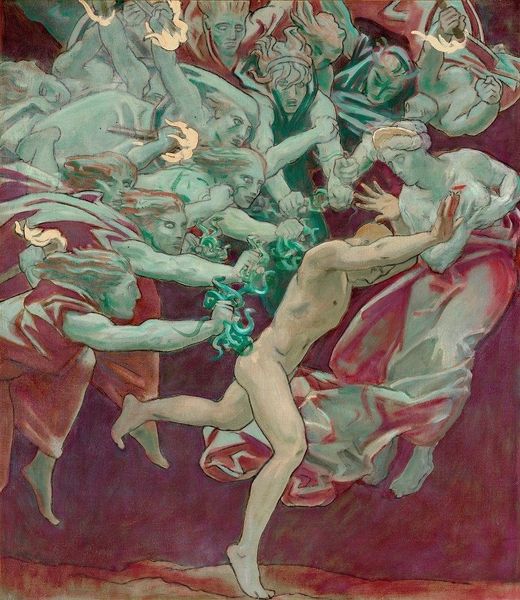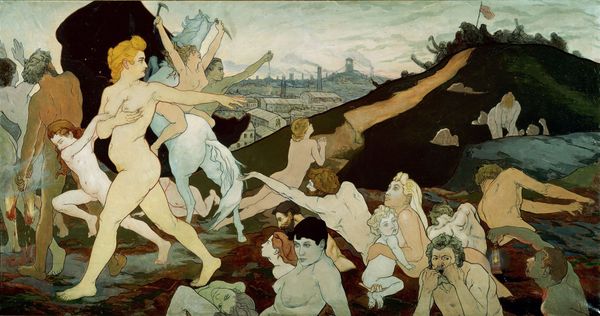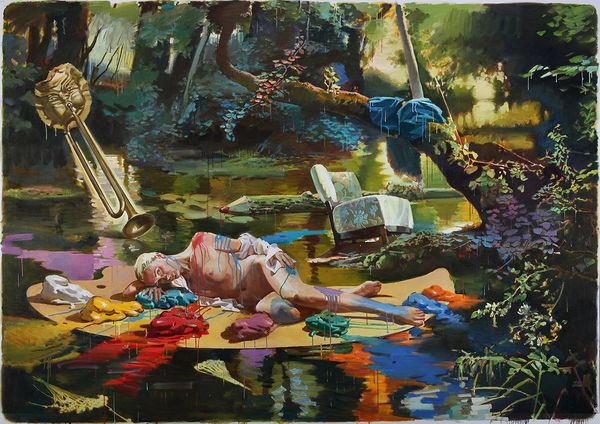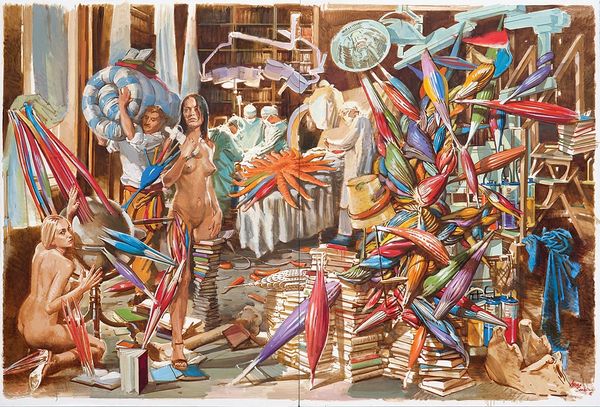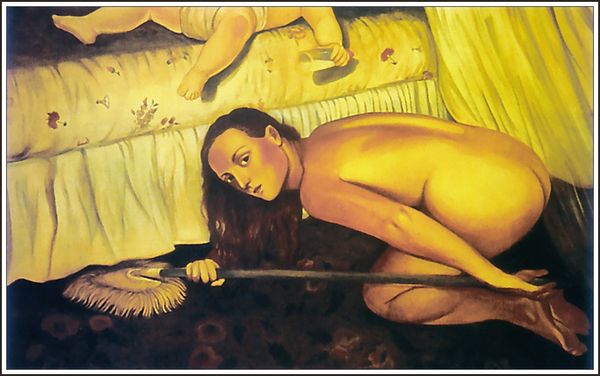
oil-paint
#
contemporary
#
oil-paint
#
landscape
#
figuration
#
oil painting
#
genre-painting
#
nude
#
realism
Copyright: Arsen Savadov,Fair Use
Artist: Here, we have Arsen Savadov's oil painting from 2010, called 'Aurora.' It’s… a lot, isn't it? What hits you first? Art Historian: The excess. It feels like a banquet after the gods have left, or perhaps are still invisibly present. The sheer profusion of objects laid out is nearly overwhelming. There's a dreamlike, theatrical quality to it. Artist: Yes! Exactly, you get that feeling. It’s meant to evoke, I suppose, a sort of aftermath—or the calm *before* some unknown storm, ha. You see these figures sort of emerging, draped, against that nighttime cityscape… it’s supposed to hint at potential, veiled power. I mean, aurora… what is aurora? Art Historian: In the classical sense, Aurora is the Roman goddess of dawn. Light breaking into darkness. But the abundance, the slightly ruined feeling, makes me think of memento mori—symbols of mortality nestled amidst life’s indulgences. Artist: Well spotted! Yes, there's a decay, too, a touch of anxiety layered in with all this sumptuous stuff. The setting of it... a window open to a modern city lights below that nighttime cityscape… a new world after the deities! Like old myths in shiny, new wrapping. A still life scene from mythology’s dream life. A little strange. A little beautiful. Art Historian: Precisely. Those floating objects—plates, books, even a child's toy—defy gravity. They seem to carry symbolic importance. The plates might relate to communal feasts of a shared prosperity? And perhaps it's not a child's toy—only something reminescent to its shape. But why would it be there and what is the meaning of this object? And who this young person here? It feels like we should know their story. Artist: I like the idea about the communal feasts; perhaps that's part of it! What I really was looking at is this ambiguous stage. Like is all that happening at the backstage of a theater just before the premiere! I do like this kind of art because allows viewers to think by themself. Art Historian: Ambiguity becomes the painting’s greatest power, doesn't it? A window into personal introspection.
Comments
No comments
Be the first to comment and join the conversation on the ultimate creative platform.
